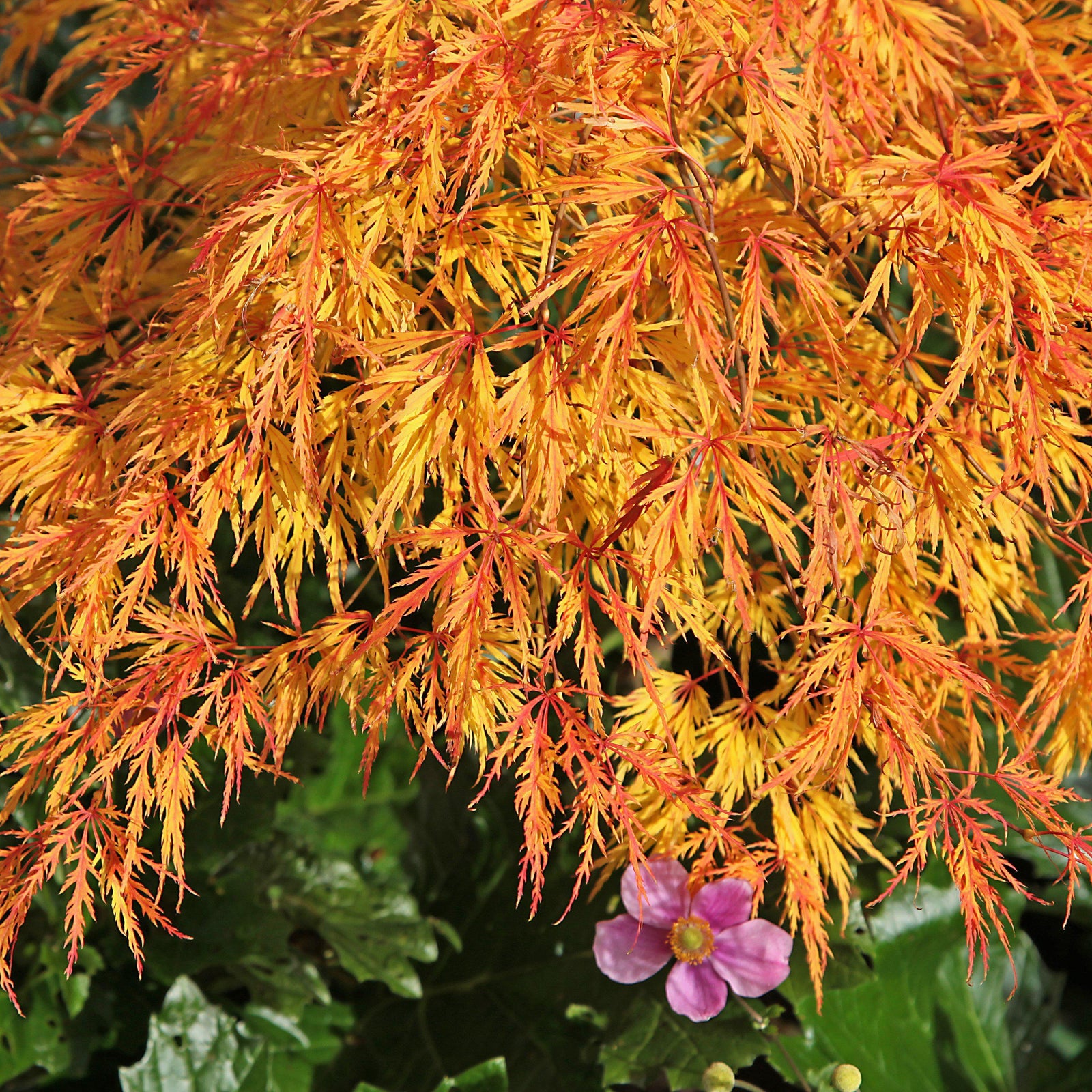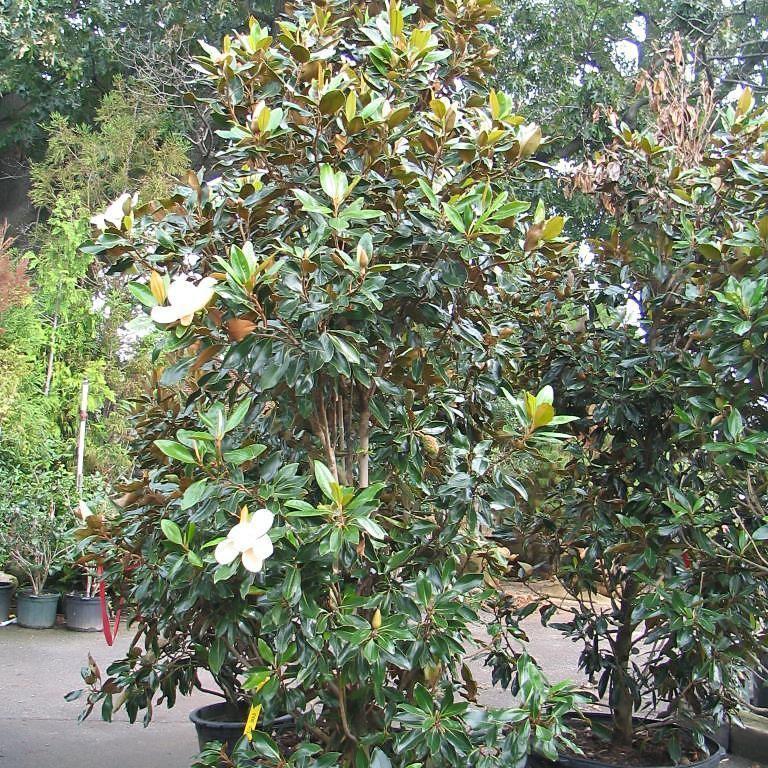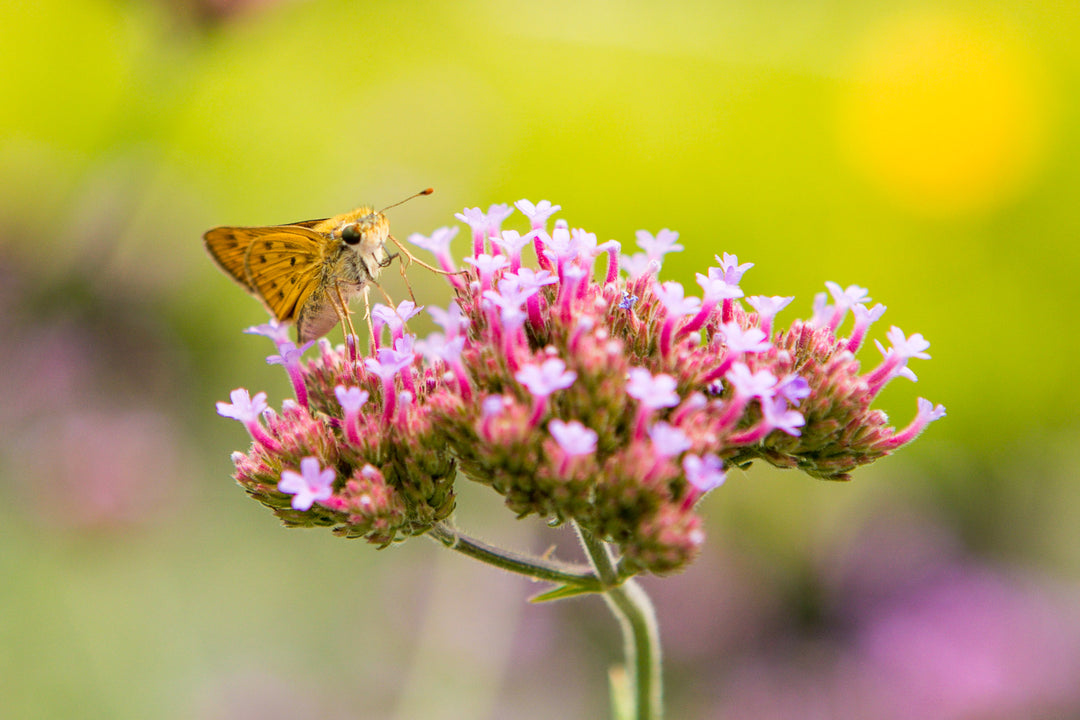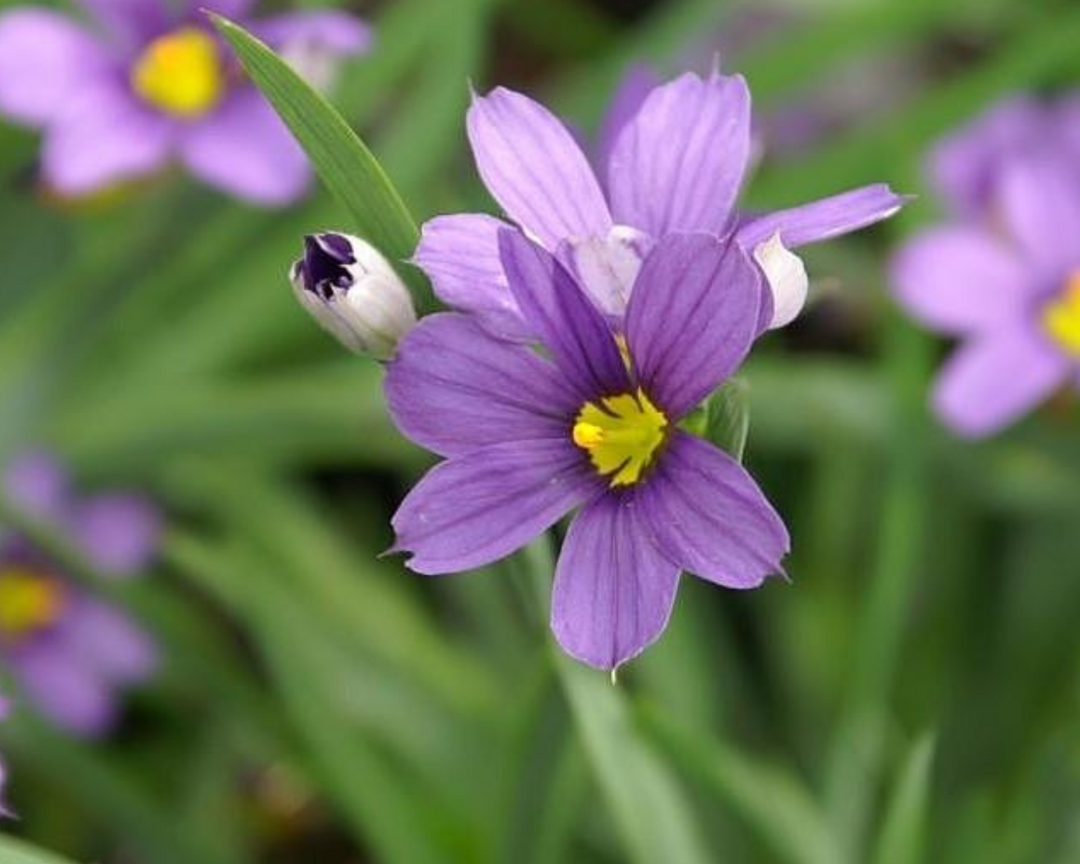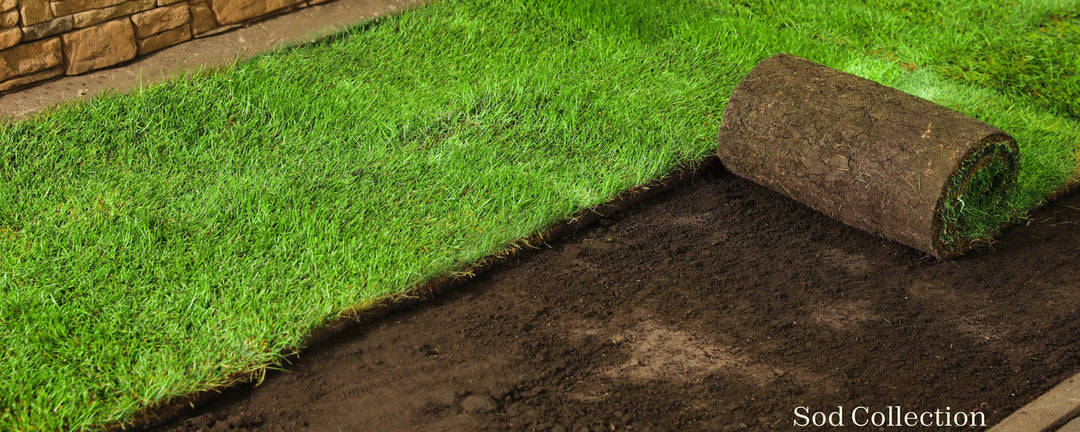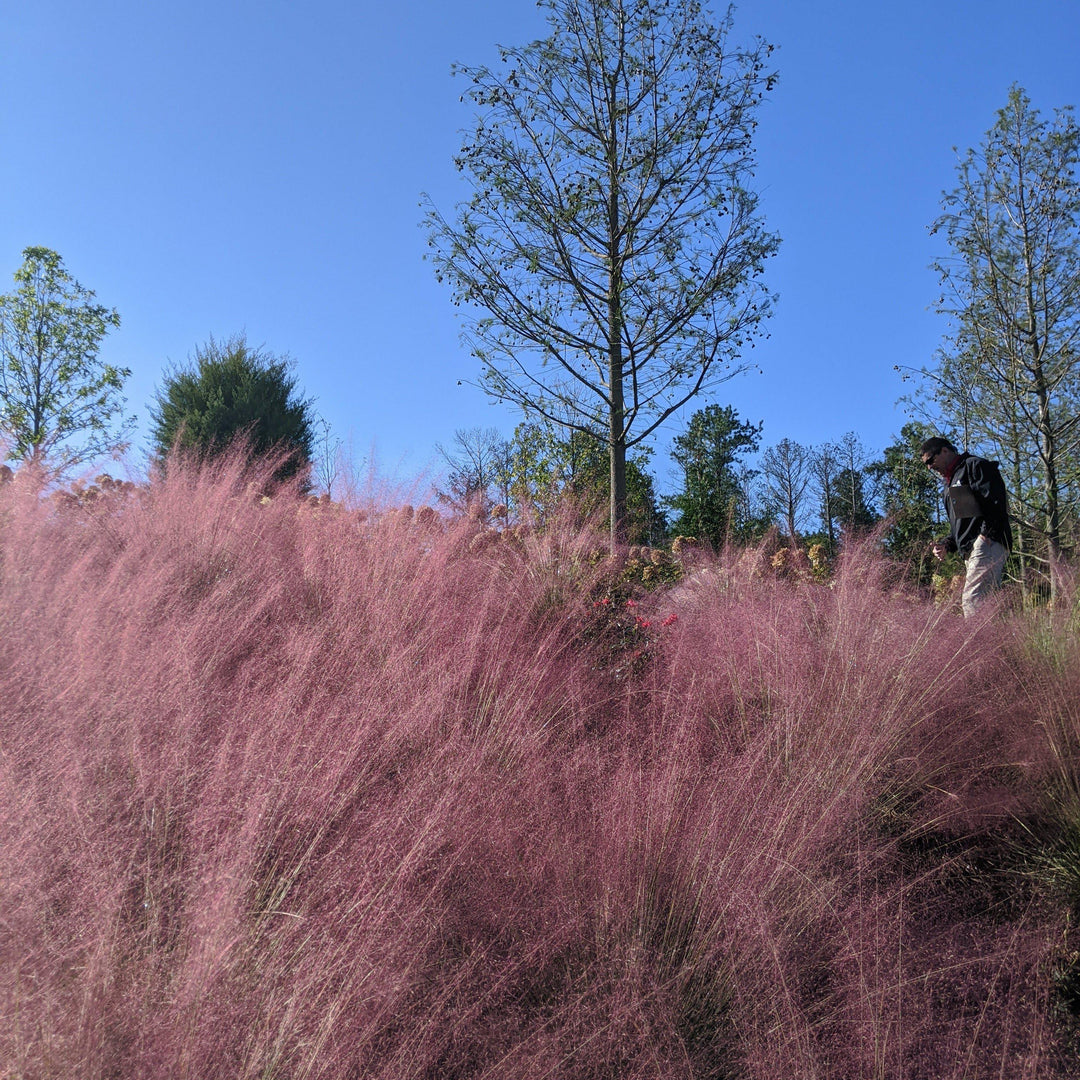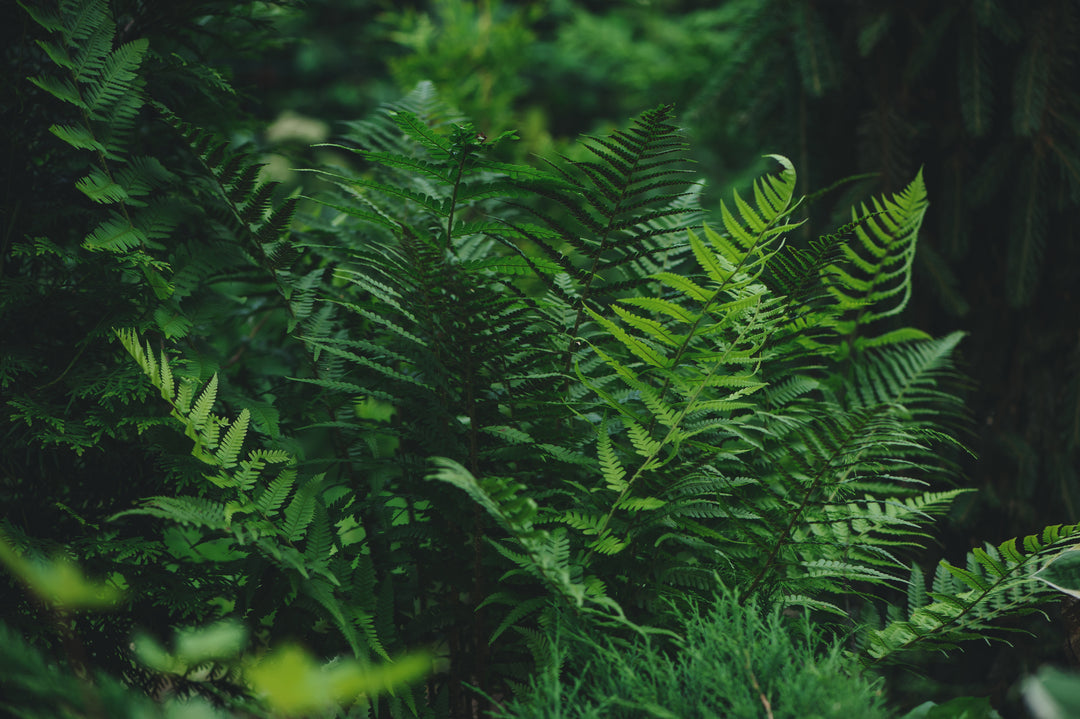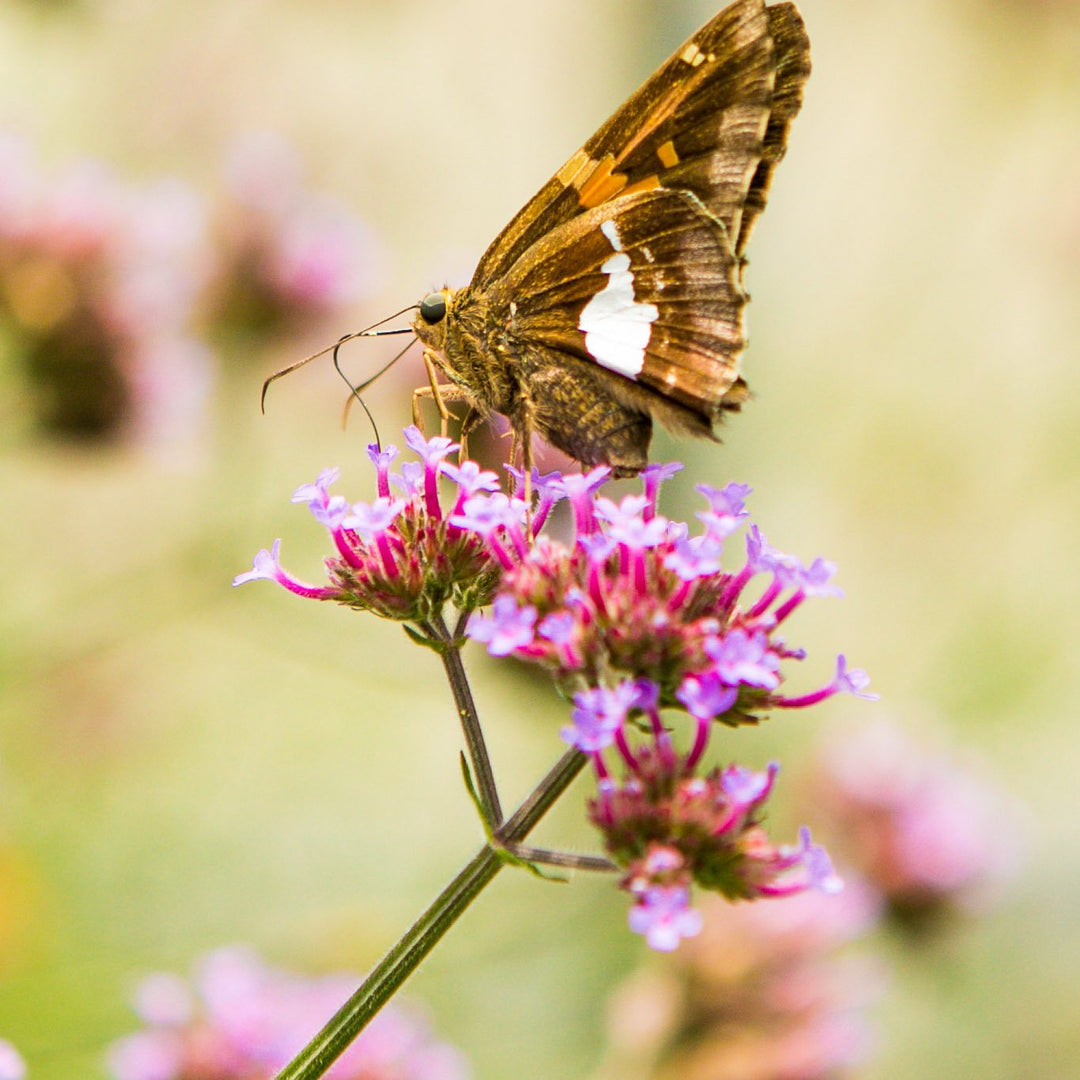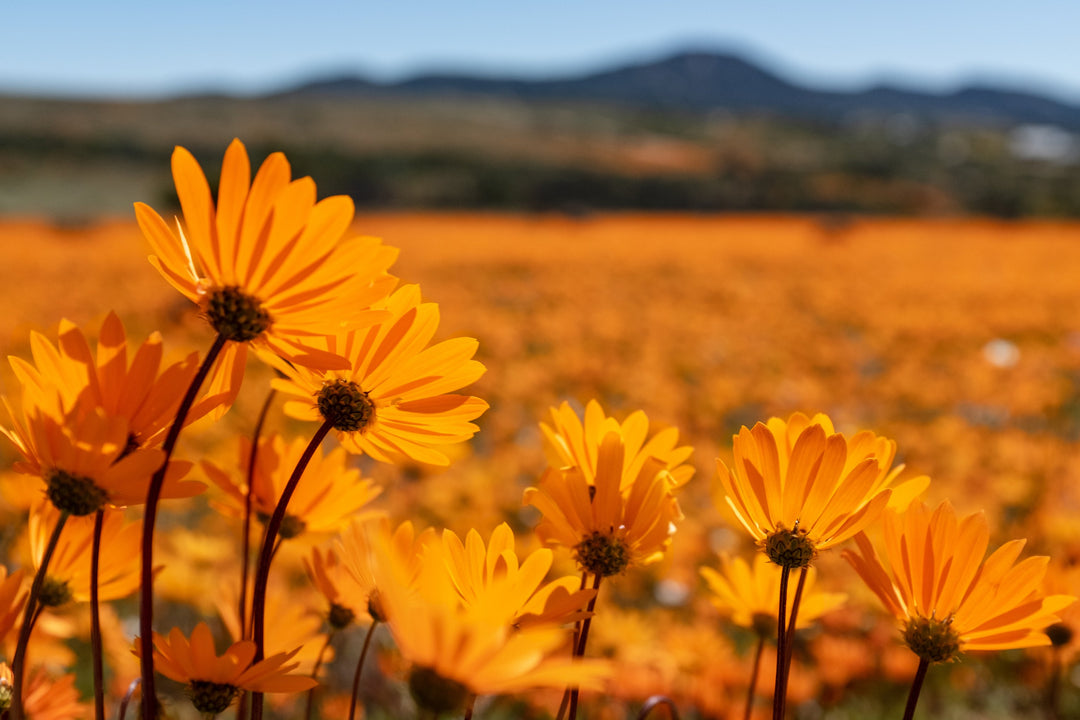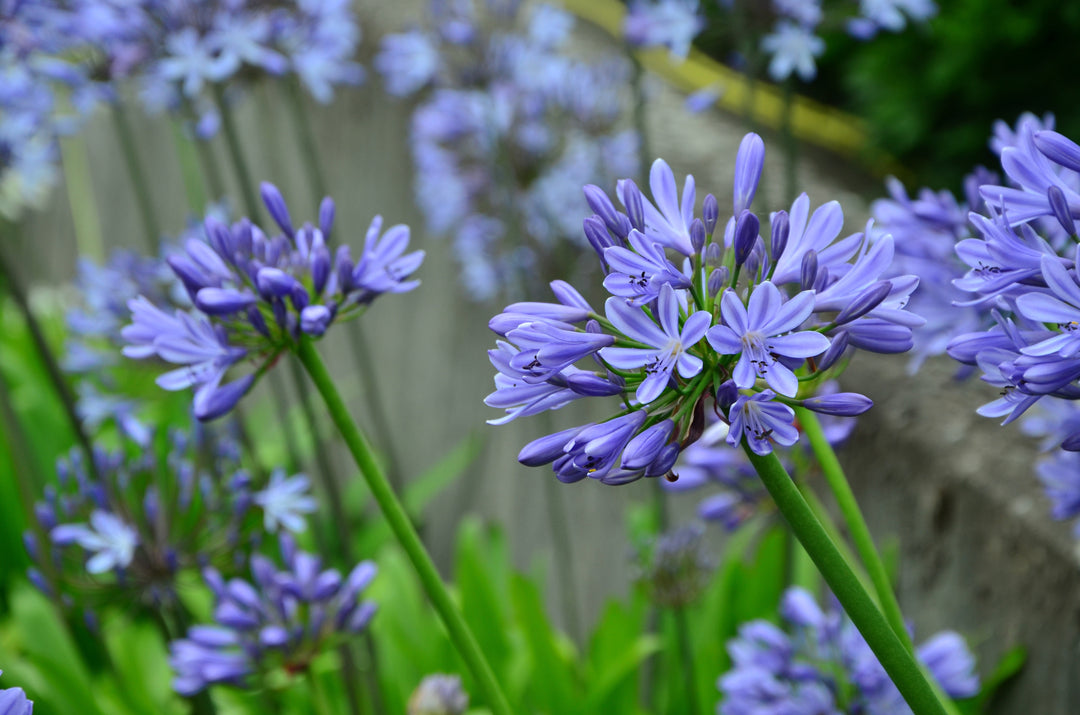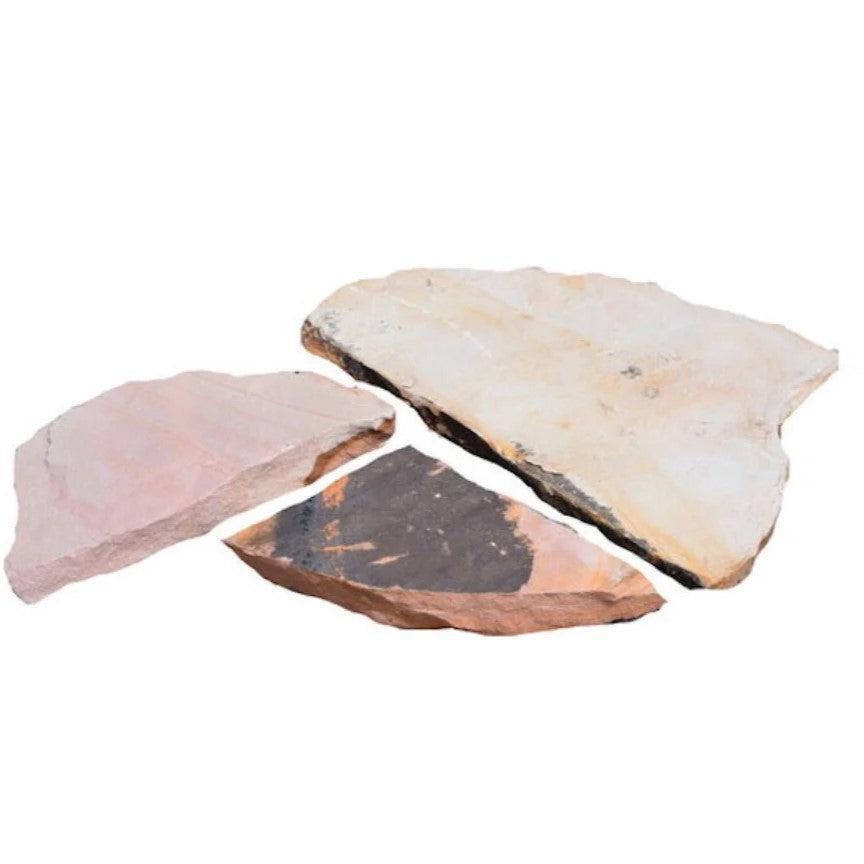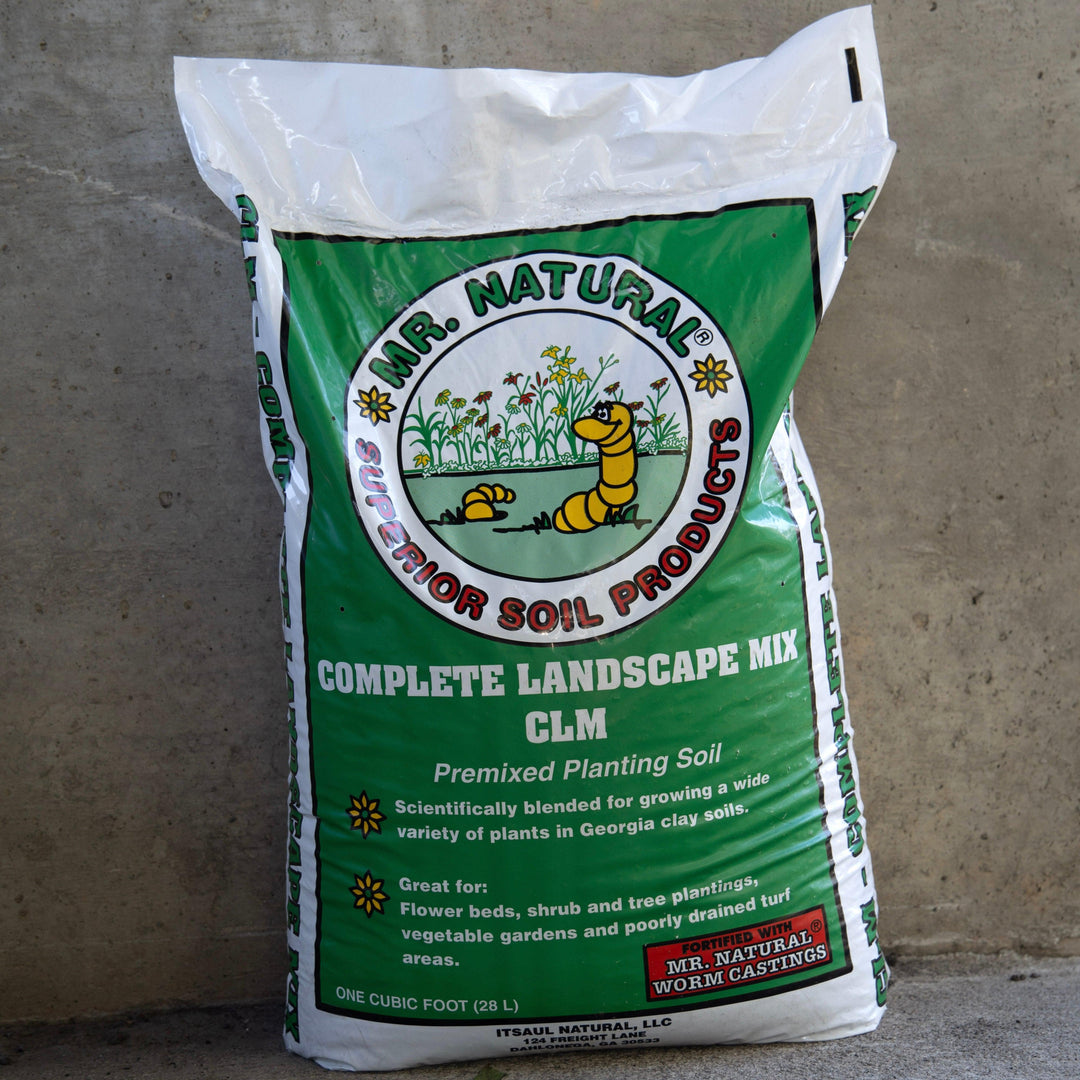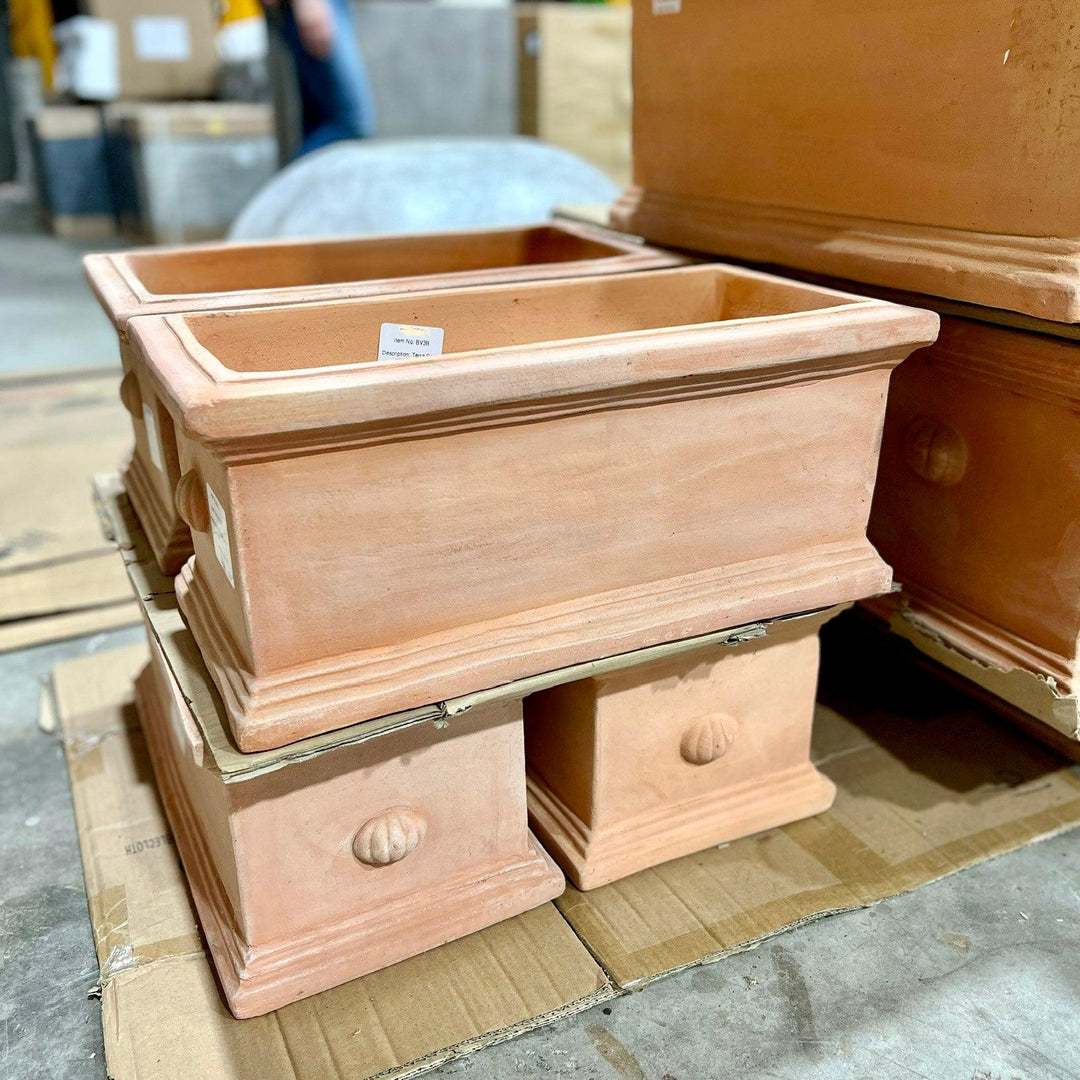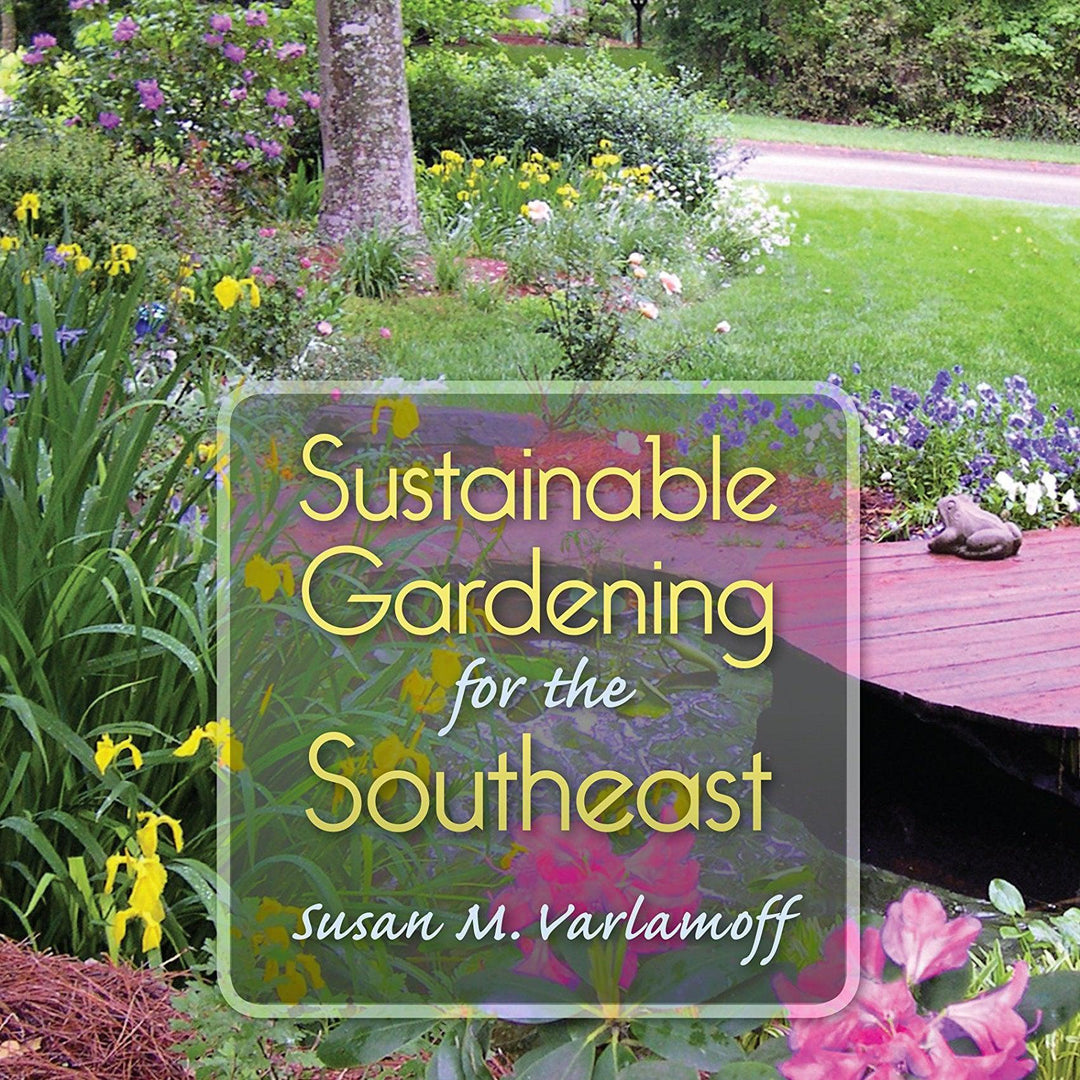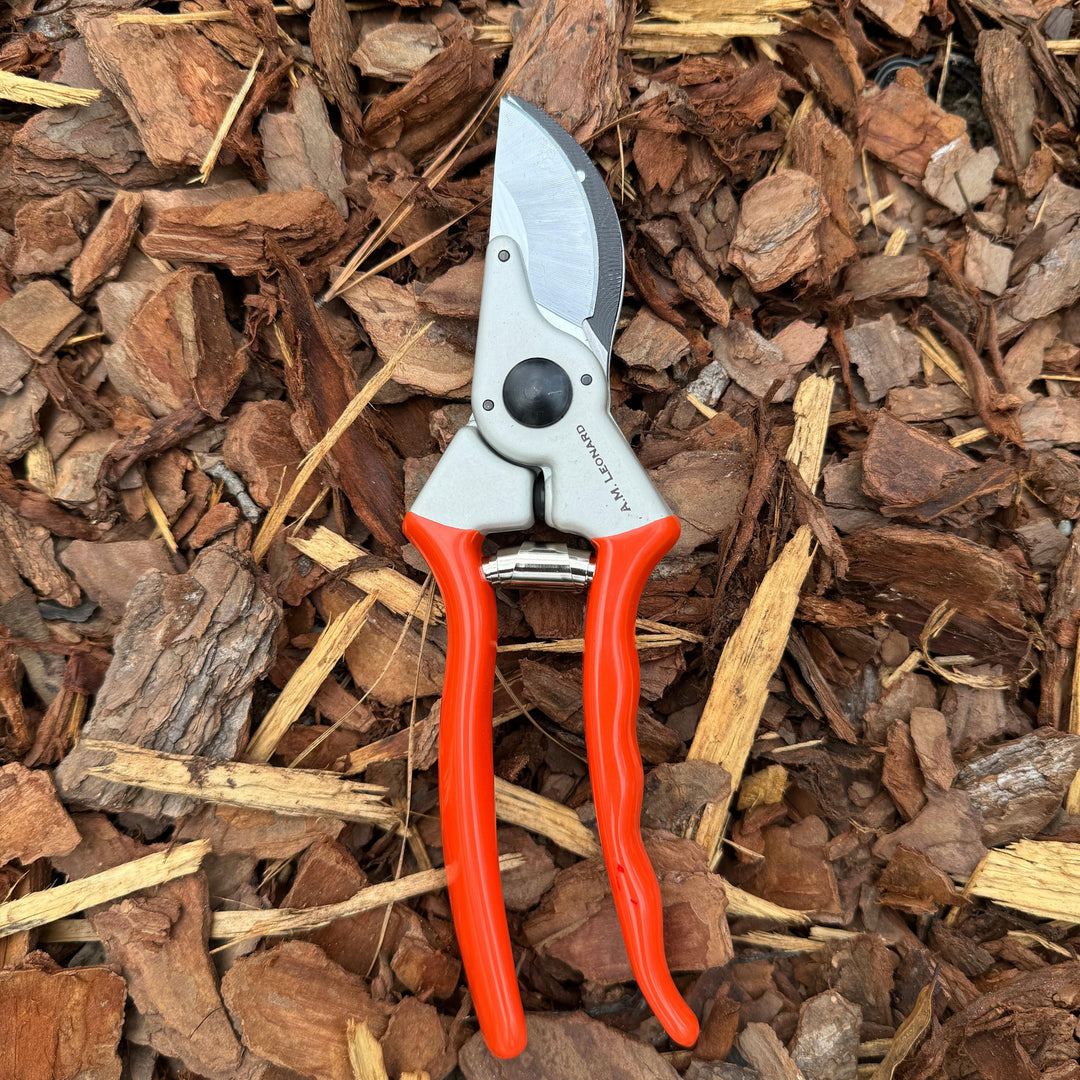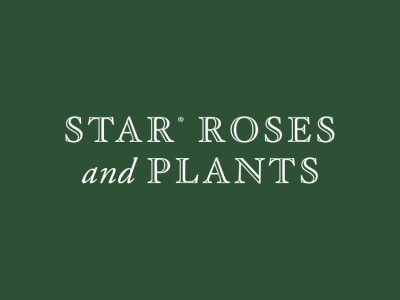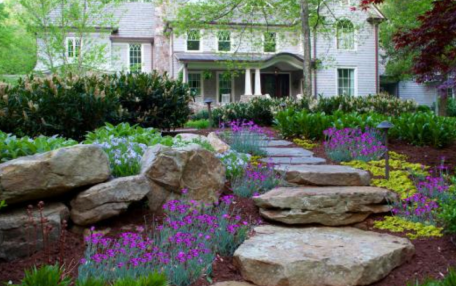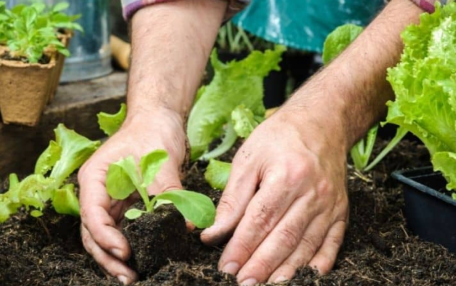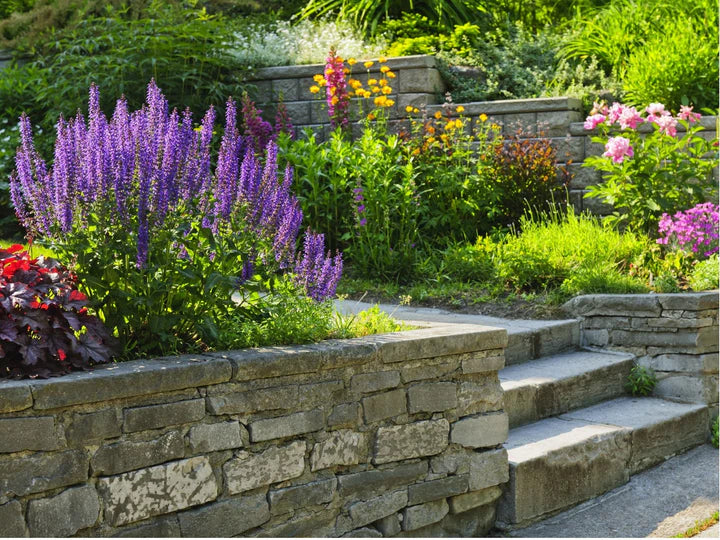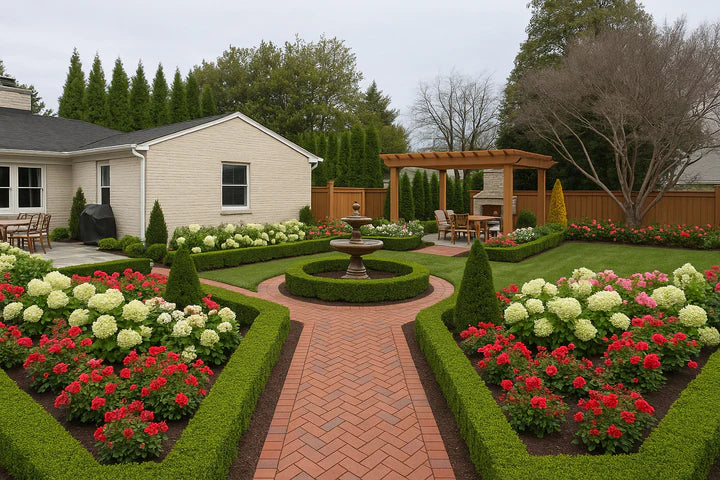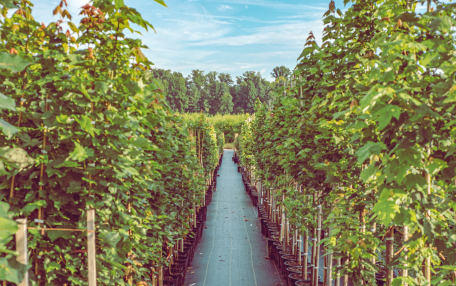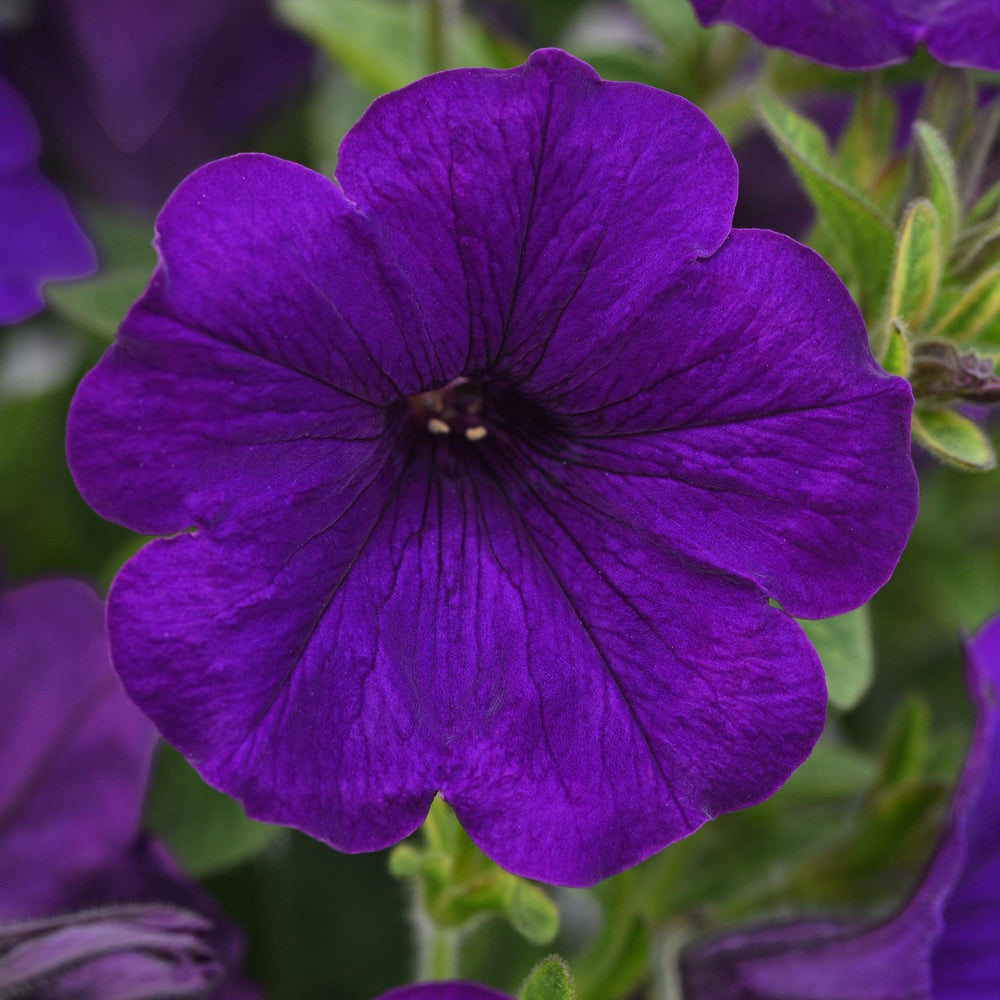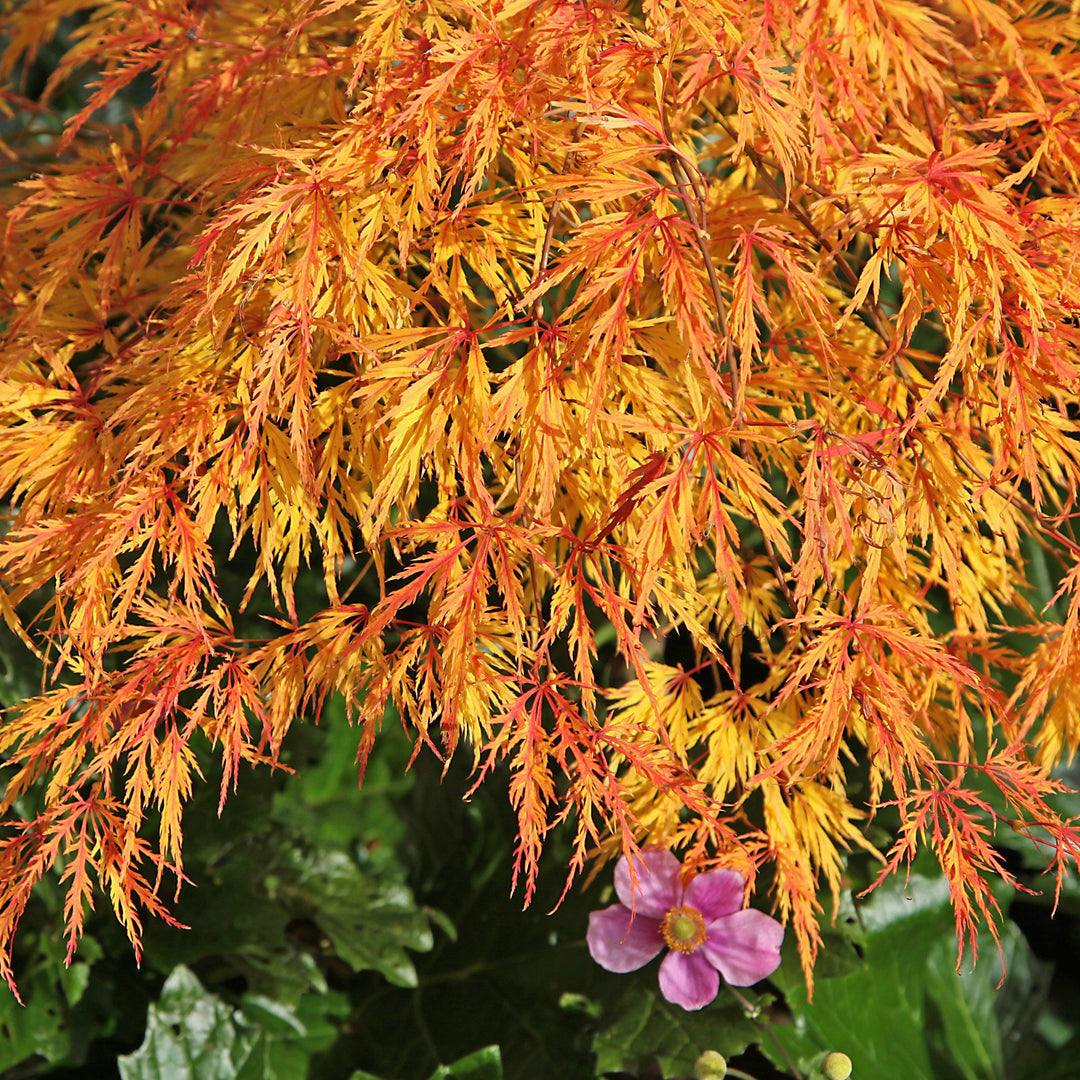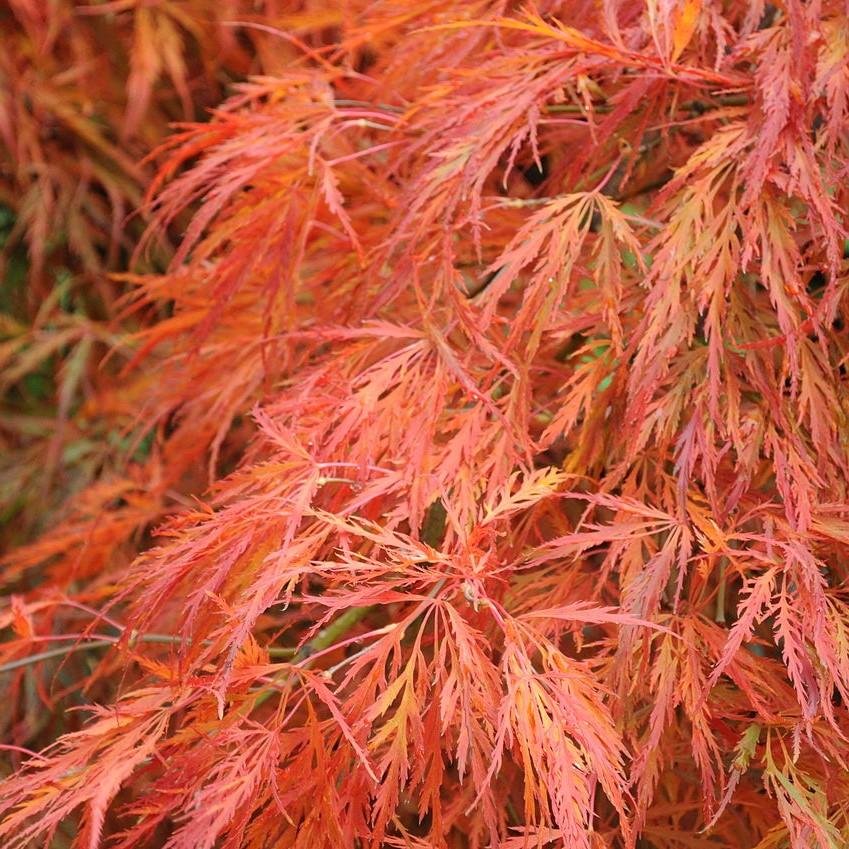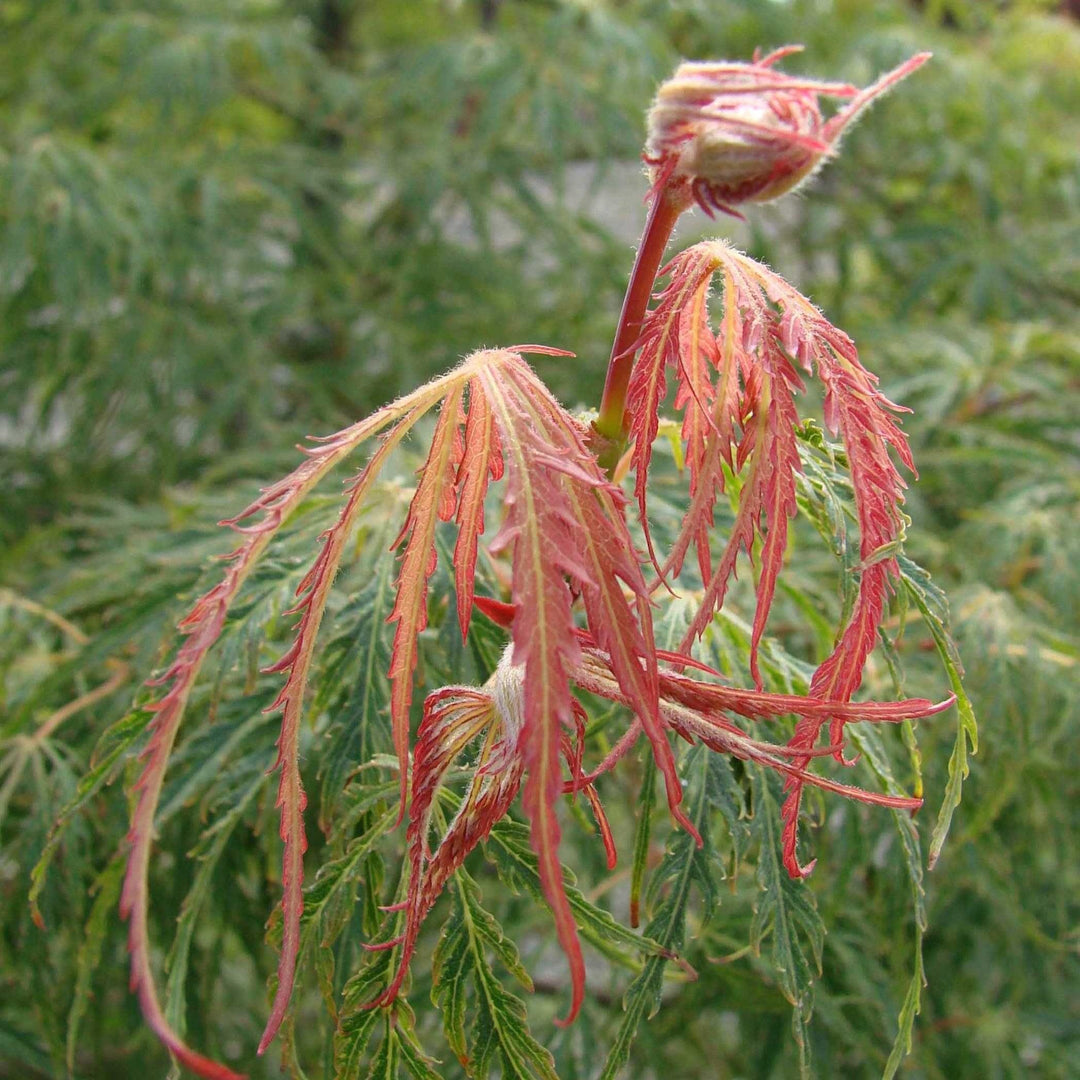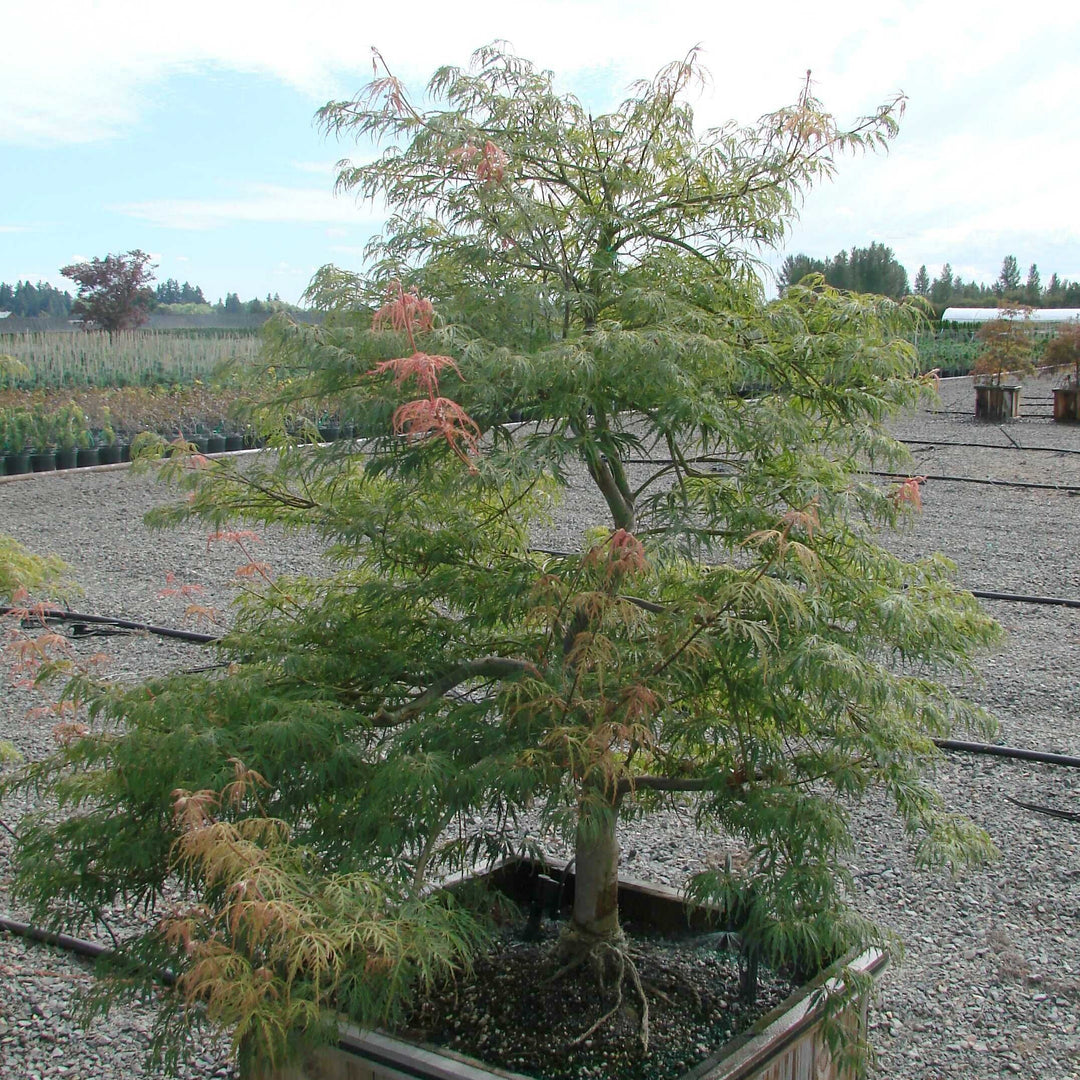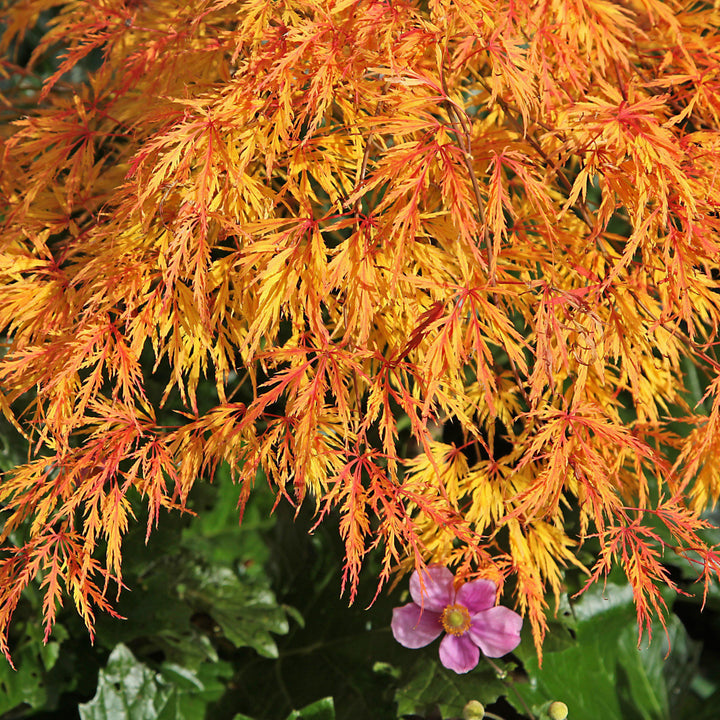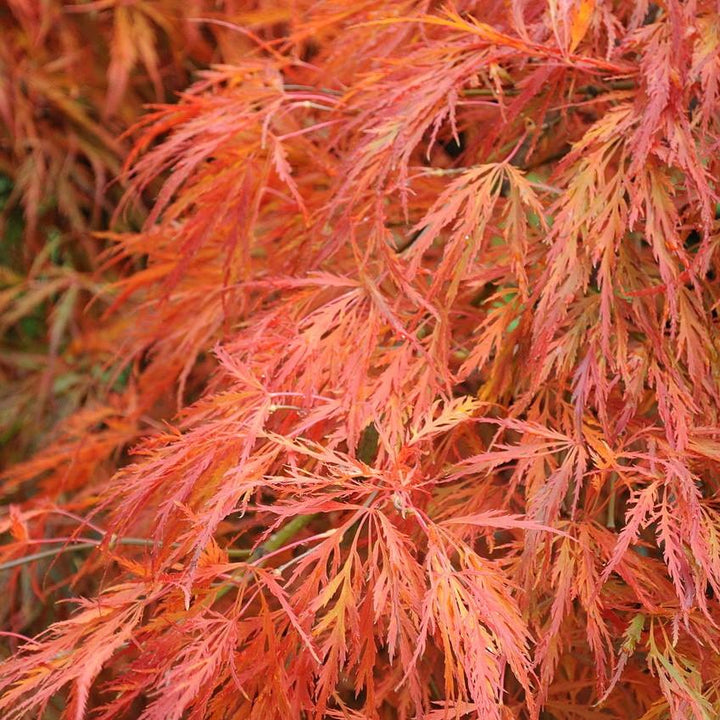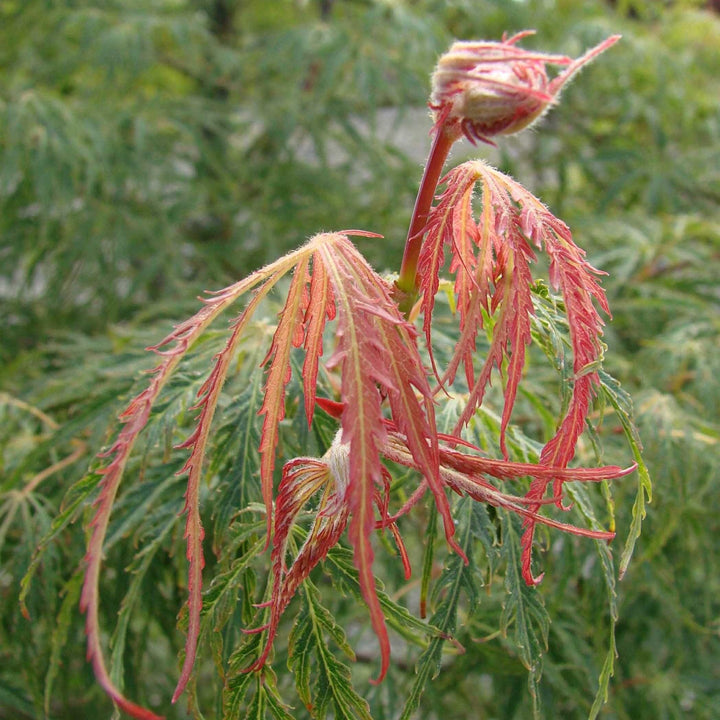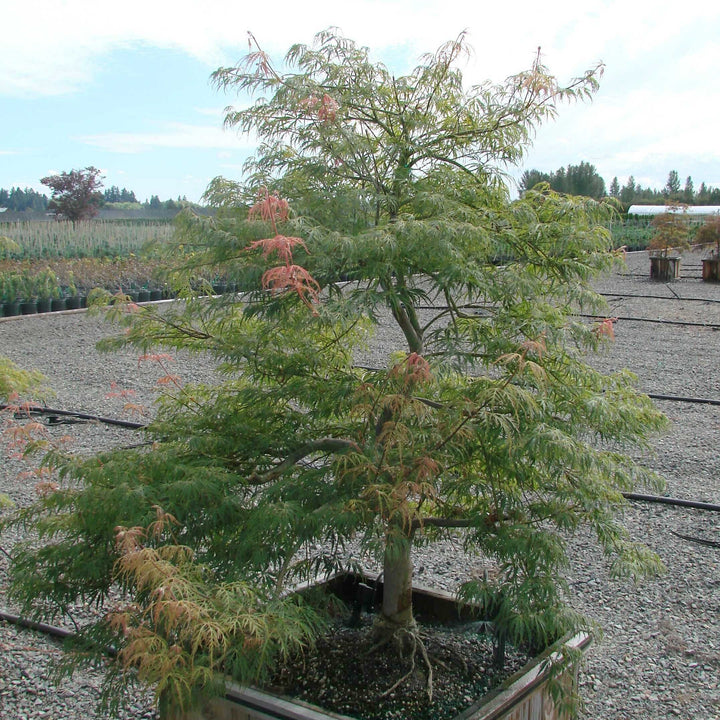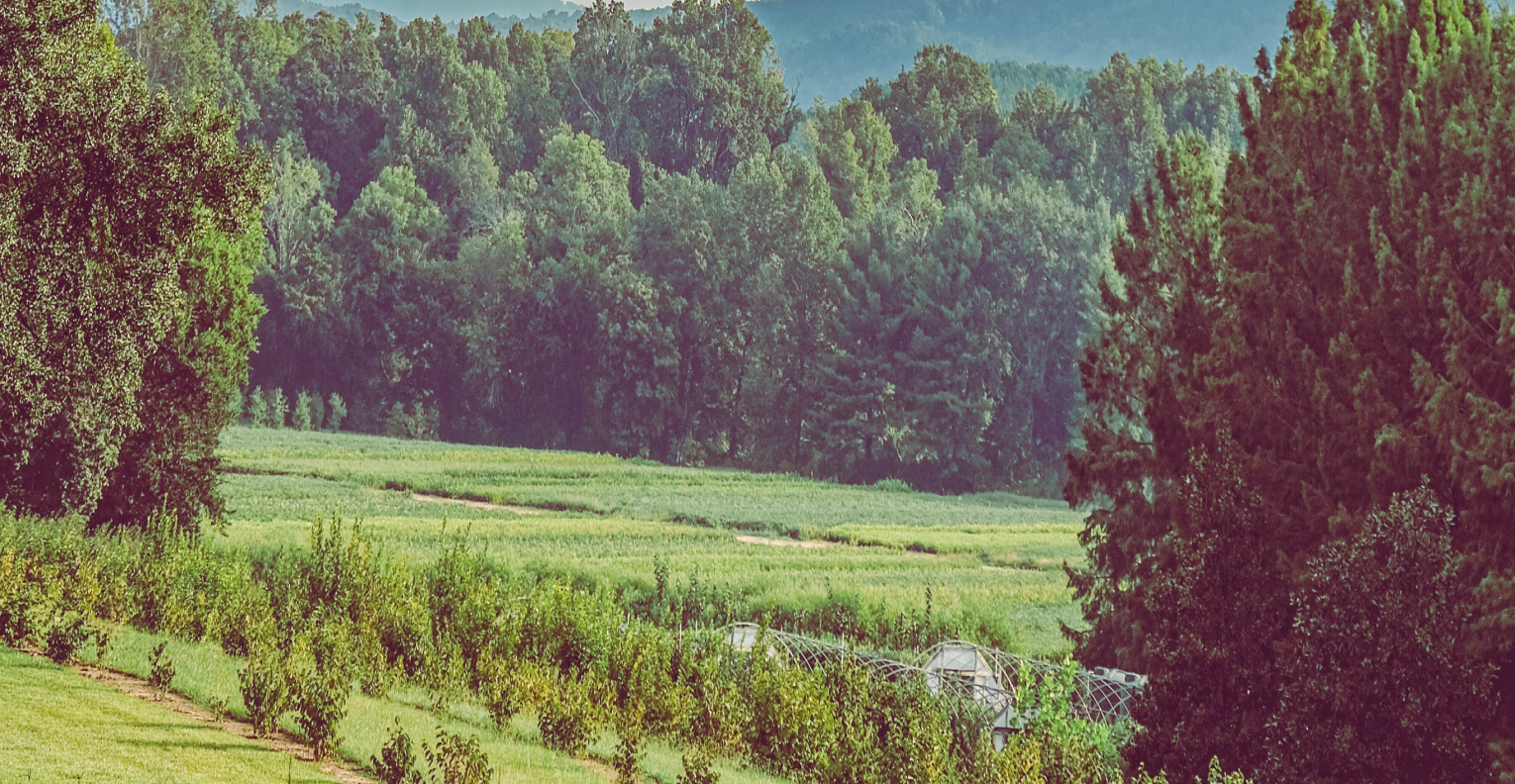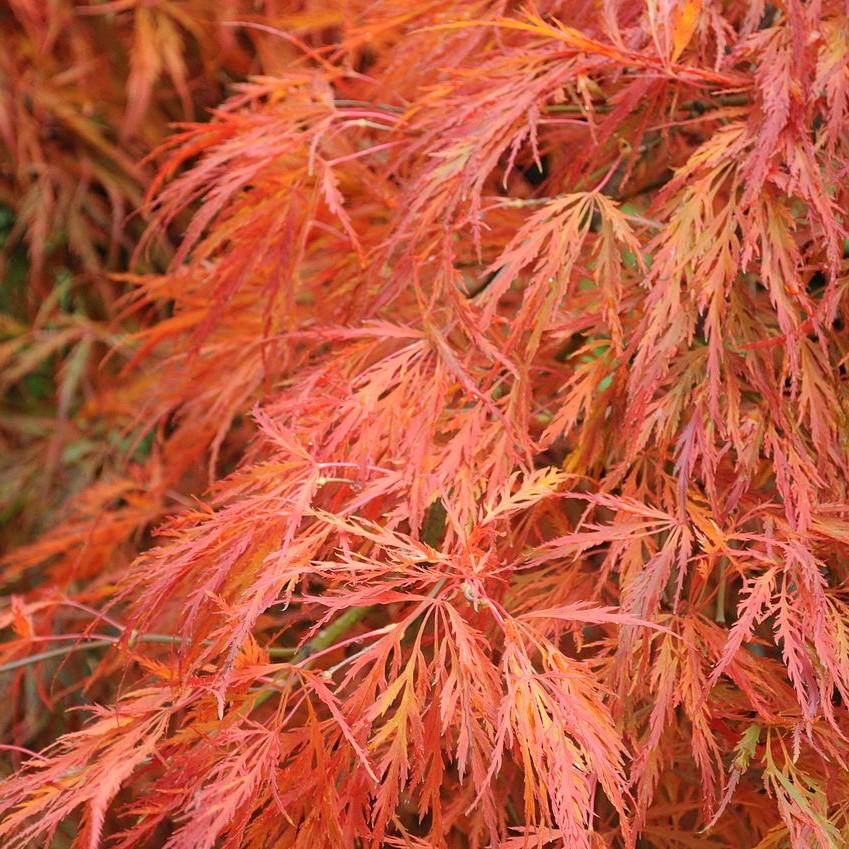Spring Delight Japanese Maple is a lovely dwarf deciduous tree with a graceful spreading form and vibrant lacy foliage. The foliage emerges cranberry and slowly matures to bright green with the red hanging onto the tips for an extended time before the leaves turn warm orange in fall. Grows best in rich, moist, slightly acidic well-drained soils. Prefers full sun in cooler climates, but needs afternoon shade in southern areas.
|
Type: |
|
|
Origins: |
East Asia |
|
Height: |
4’ - 6’ |
|
Spread: |
5’ - 8’ |
|
Spacing: |
6’ |
|
USDA Hardiness Zone: |
5 - 8 |
|
Culture: |
|
|
Bloom Color: |
Red |
|
Season of Interest: |
MAINTENANCE NEEDS: Low maintenance. Water regularly. Mulch in southern climates to keep roots cool. Keep pruning to a minimum and prune in fall or winter. Potential issues include stem canker, leaf spots, fusarium, wilt, botrytis, anthracnose, and root rots. Potential insect pests include aphids, scale, borers, root weevils, and mites. Chlorosis may occur in high pH soils
LANDSCAPE USES: Group Plantings or Specimen Tree, Borders, Woodland Gardens, and Foundational Plantings.
COMPANION PLANTS: Pieris, Astilbe, Japanese Forest Grass
IMAGE: Joe Mabel, Acer palmatum fall foliage 02, CC BY-SA 3.0, (2) Mark Bolin, Acer palmatum 'Spring Delight' (5)+(6)
*As plants have ranges in appearance they may not appear as the images shown.


